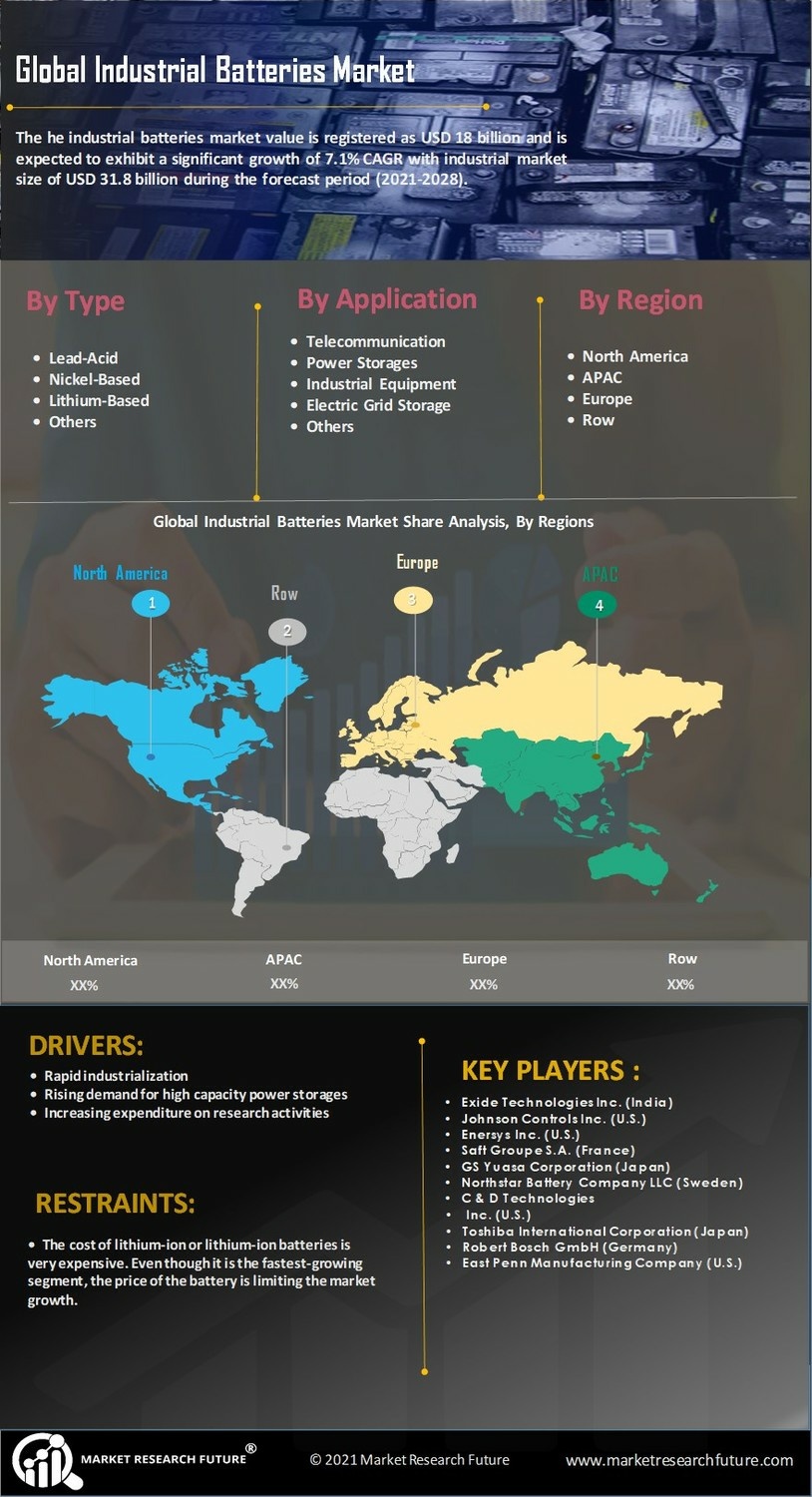Expansion of Industrial Automation
The ongoing expansion of industrial automation significantly influences the Industrial Batteries Market. As industries adopt automated systems to enhance efficiency and reduce operational costs, the reliance on uninterrupted power supply becomes critical. Industrial batteries serve as backup power sources, ensuring that automated processes remain operational during power outages. The automation market is expected to witness substantial growth, with industrial batteries playing a vital role in supporting this transition. This trend suggests a sustained demand for reliable battery solutions that can meet the energy needs of increasingly automated environments.
Growth in Electric Vehicle Adoption
The surge in electric vehicle (EV) adoption is a pivotal driver for the Industrial Batteries Market. As governments and consumers increasingly prioritize sustainable transportation, the demand for high-capacity batteries escalates. The EV market is anticipated to expand rapidly, with projections suggesting that battery demand could reach several hundred gigawatt-hours by the end of the decade. This growth necessitates advancements in battery technology, particularly in terms of energy density and charging speed. Consequently, industrial batteries are becoming integral to the automotive sector, further propelling their market presence and innovation.
Rising Demand for Renewable Energy Storage
The increasing emphasis on renewable energy sources, such as solar and wind, drives the Industrial Batteries Market. As these energy sources are intermittent, the need for efficient energy storage solutions becomes paramount. Industrial batteries, particularly lithium-ion and lead-acid types, are essential for storing excess energy generated during peak production times. According to recent data, the energy storage market is projected to grow significantly, with industrial batteries expected to capture a substantial share. This trend indicates a robust demand for industrial batteries, as they play a critical role in stabilizing energy supply and enhancing grid reliability.
Technological Innovations in Battery Chemistry
Technological innovations in battery chemistry are transforming the Industrial Batteries Market. Advances in materials science and engineering are leading to the development of batteries with improved performance characteristics, such as longer life cycles and faster charging times. Innovations like solid-state batteries and advanced lithium-sulfur technologies are gaining traction, potentially reshaping the market landscape. As these technologies mature, they are likely to enhance the competitiveness of industrial batteries, making them more appealing for various applications. This evolution indicates a dynamic market environment where continuous improvement is essential for meeting diverse energy storage needs.
Increased Investment in Infrastructure Development
Investment in infrastructure development is a key driver for the Industrial Batteries Market. As countries focus on modernizing their infrastructure, the demand for energy storage solutions rises. Industrial batteries are essential for various applications, including construction, telecommunications, and transportation. Recent data indicates that infrastructure spending is projected to increase significantly, leading to heightened demand for industrial batteries. This trend underscores the importance of robust energy storage systems in supporting large-scale projects and ensuring operational efficiency across multiple sectors.


















Leave a Comment